In early December the Baseball Hall of Fame’s Early Baseball Era (pre-1950) and Golden Days Era Committees (1950-69) will each vote on a ballot of ten pre-screened candidates for 2022 induction into the HOF. To be elected a candidate will need to secure at least 12 of the available 16 votes. In this post, Baseball Roundtable will look at the Early Baseball Era candidates:
- Indicating whom Baseball Roundtable would vote for if I had a ballot;
- Profiling and ranking the candidates; and, finally,
- Attempting to predict which candidate(s), the Committee will select.
For a Baseball Roundtable’s look at the Golden Days Era ballot, and more on the election process, click here.
A Statistical Word(s) of Caution
A cautionary note, in case readers find what they feel are some discrepancies in the stats presented in this post.
When putting together these bios on Negro League and barnstorming players, there were often differences – both major and minor – in reported stats. For example, consider Dick “Cannonball” Redding. The Seamheads.com Negro League Database credits Redding with a record of 8-3 for the 1915 New York Lincoln Stars of the Eastern Independent Clubs League (and credits the Giants with a 24-14-2 record). The Negro Leagues Baseball Museum profile, however, credits Redding with a 23-2 record for the Stars that season, including a 20-game winning streak (which is supported by the clip from the July 24, 1925 edition of the Chicago Defender – referenced in the Center for Negro League Baseball Research‘s Redding bio). Why the difference? Negro League teams, like Black players of the time, took games against opponents wherever they could showcase their talents, promote the game and generate revenue. The Seamheads’ stats appear to include only league games, while the NLBM looked, as much as possible given record keeping in the era, at total contests (all levels of competition). You can find a similar example in the case of Buck O’Neil: The Negro League Baseball Museum credits O’Neil with a .288 career average, Baseball-Refeence.com with a .283 average and the Seamheads.com Negro League Data Base .263. As Baseball Roundtable put together this post, I looked at a variety of statistical and anecdotal sources. Given the lack of opportunity facing Black players in the period covered by the Early Baseball ballot, I consistently leaned toward the Negro Leagues Baseball Museum’s profiles.
BASEBALL ROUNDTABLE’S BALLOT … IF I HAD ONE
- Buck O’Neil (Nov. 13, 1911 – October 6, 2006) … Professional Career: 1B/OF/Mgr., 1934-55
Buck O’Neil getting my first vote is the only no-brainer on this list – based on his career, his character and his contributions to the game.
O’Neil began his professional career touring with the Miami Giants in 1934 and also toured with the New York Tigers and Shreveport Acme Giants before signing with the Negro American League Memphis Red Sox in 1937 (although he later moved to the Zulu Cannibal Giants).
In 1938, he joined the Kansas City Monarchs and remained with the franchise until 1955. O’Neil also played in the Cuban League, Mexican Winter League and toured and with the Satchel Page All Stars.
O’Neil led the Negro American League in batting average in 1946 at .353 and followed that up with a .358 average in 1947. Overall, he had four seasons of .330 or better. He played in three Negro League All Star (East-West) Games and two Negro League World Series. As a manager, he led the Monarch to five Negro League Pennants.
O’Neil later served as a scout and coach with the Chicago Cubs (the first Black coach in AL/NL history) and as a scout for the Kansas City Royals. He played a key role in the discovery and/or signing of such players as Lou Brock, Oscar Gamble, Lee Smith, Billy Williams and Ernie Banks.
Lou Brock on Buck O’Neil
“He shaped the character of young Black men. He touched the heart of everyone who loved the game. He gave us all a voice that could be hard on and off the field.”
O’Neil, who helped establish the Negro Leagues Baseball Museum, also gained recognition as one of the most eloquent spokesmen for (and advocate of) the national pastime – in particular the history of the Negro Leagues. Over the years, he cemented his reputation as an individual of great energy, spirit, integrity and character.– remaining consistently true to his passion for the game.
Here are just a few of the accolades O’Neil has already received.
- 2006 … The Presidential Medal of Freedom.
- 2007 … On the day of MLB’s first “Civil Rights Game,” O’Neil was awarded MLB’s first-ever Beacon of Life Award.
- 2008 … the National Baseball Hall of Fame established the Buck O’Neil Lifetime Achievement Award – to honor individuals of character, integrity and dignity, who have enhanced baseball’s positive impact on society and broadened the game’s appeal. O’Neil, of course, was the first recipient.
2008 … Induction into the Baseball Reliquary Shrine of the Eternals.
2012 … Induction into the Hall of Famous Missourians.
2016 … Kansas City’s Broadway Bridge was officially renamed the Buck O’Neil Bridge.
Despite these accolades , there is one well-deserved recognition that is overdue. Buck O’Neil belongs in the Baseball Hall of Fame.
- Vic Harris (January 10, 1905 – February 23, 1978) … Professional Career: OF/1B/Mgr., 1923-50
Vic Harris gets Baseball Roundtable’s second vote for a combination of his exceptional playing career and, of notable impact on my decision, his seven Negro League Championships as manager of the Homestead Grays.
Harris spent the bulk of his professional career with the Homestead Grays (23 seasons as a player and/or manager) – considered one of the elite franchises in Black baseball history. He was a solid, slash hitter (.299 career average), a good fielder (known for his consistent hustle) and an aggressive base runner. Harris played in six Negro League All Star (East-West) Games. A few career highlights:
- As a Negro Leagues rookie in 1923, Harris hit .304 for the Cleveland Tate Stars.
- In 1929, he led the American Negro League in hitting, batting .333 for the Homestead Grays.
- Playing for the Grays, he hit .324 in 1930, .348 in 1932; and .351 in 1933.
- In 1934, he hit .360 for the Pittsburgh Crawfords.
Harris played with the Homestead Grays from 1925 to 1933. In 1934, he moved to the Pittsburgh Crawfords, but that lasted just one season. After his 1934 season with the Crawfords, Harris was convinced to rejoin the Homestead Grays as player-manager. As a player, Harris hit .370 for the Grays in 1935 and .380 in 1938. As a manager he led the Grays to five seven Negro League pennants. (He also managed the Birmingham Black Barons for one season.) Harris also played and managed in Cuba and Puerto Rico.
Among the teams Harris played for were the: Cleveland Tate Stars; Toledo Tigers; Cleveland Browns; Chicago American Giants; Homestead Grays; Detroit Wolves; and Pittsburgh Crawfords.
- John Wesley Donaldson (February 20, 1891-April 14, 1970) … Professional Career: P/OF, 1908-41
The number-three spot could easily have been a tie between two premier early Black hurlers – John Wesley Donaldson and Dick “Cannonball” Redding. Donaldson gets a slight edge, as his accomplishment are, perhaps, the best-documented of any Black player of his era.
Baseball Roundtable first wrote about John Wesley Donaldson in November of 2016 after attending a presentation (before the Halsey Hall Chapter of the Society for American Baseball Research) by Peter Gorton, founder of the Donaldson Network – an organization dedicated to documenting Donaldson’s accomplishments and making the case for his election to the Baseball Hall of Fame. For that full story, click here. Again, Thanks to the efforts of the Donaldson Network, Donaldson’s achievements – particularly on the mound – are probably the best documented of any of the Black stars of his era.
Donaldson’s career stretched across four decades, during which time (like many Black players of his day), he took the mound pretty much anywhere he could draw a crowd and collect a paycheck. He played (and starred) for more than two dozen teams including the famous barnstorming All Nations Team, Brooklyn Royal Giants, Chicago America Giants, Los Angeles White Sox, New York Lincoln Giants, Indianapolis ABC’s, Detroit Stars and Kansas City Monarchs. The southpaw – who possessed a good fastball and an exceptional assortment of drops and curves, is considered one of the top pitchers of his time.
Hall of Fame MLB Manager John McGraw on John Donaldson
“I think he is the greatest (pitcher) I have ever seen.”
The Donaldson Network has documented Donaldson’s appearance in more than 700 cities and towns in the U.S. and Canada – as well as:
- 422 pitching victories;
- 5, 177 strikeouts;
- 14 no-hitters;
- Two perfect games;
- A 31-strikeout game; and
- More than 20 games of 20 or more strikeouts.
On December 9, 1917, John Donaldson, then with the Los Angeles White Sox, faced lineup of all major leaguers. He pitched complete-game, six-hitter, striking out 16 in a 5-3 victory.
- Dick “Cannonball” Redding (April 15, 1890 -October 31, 1948) … Professional Career: P/OF/1B/Mgr., 1911-38
Dick Redding’s overpowering fastball earned him the nickname “Cannonball” – and he lived up to it. Among his accomplishments (NLBM profile):
- 30 no-hitters (multiple levels of competition);
- 17 consecutive wins in his rookie season with the New York Lincoln Giants in 1911;
- A 43-12 record, seven no-hitters, and 25 strikeouts in a nine-inning game for the Giants in 1912; and
- A 20-game winning streak for the Lincoln Stars in 1915.
Redding was also known as a big-game pitcher who consistently got the better of barnstorming major-league hitters.
Let’s Play Two
Dick Redding was considered a workhorse. His Negro Leagues Baseball Museum profile indicates he nearly always finished what he started, was more than willing to pitch on back-to-back days and “often pitched doubleheaders two or three days in succession.”
Among the teams Redding pitched for were: the Philadelphia Giants; New York Lincoln Giants; Indianapolis ABC’s; Brooklyn Royal Giants; Chicago American Giants; Atlantic City Bacharachs; and New York Bacharachs. He served as a player-manager for the Atlantic City Bacharachs (1920-21) and the Brooklyn Royals (1927-33). He also played in the Cuban Winter Leagues.
Sit Down Babe
Dick Redding once struck out Babe Ruth three times (on nine pitches) in a game against Ruth’s Barnstorming team (as noted in “Great Pitchers of the Negro Leagues,” by Paul Hoblin, SportsZone 2012).
Redding should meet the Babe again – in the HOF.
Now for the remainder of the ballot.
Actually, a pretty good case could be made for any of these players – but I could only choose four.
- Bill Dahlen (January 5, 1870 – December 5, 1950) … MLB Career: SS-3B, 1891-1911
How I wish I had one more vote. It’s hard to pass on a player who played his last MLB game 110 years ago and still ranks among the top five shortstops all time in career assist and putouts.
Bill Dahlen was considered one of the finest fielders and most aggressive base runners of his era. He also hit .272 over a 21-season MLB playing career, with 84 home runs, 1,234 RBI, 1,590 runs scored and 548 stolen bases. He is 59th all-time in runs scored; 33rd in triples (163); and 28th in stolen bases (548). Dahlen scored 100+ runs in each of his first six seasons and 85 or more in a total of nine campaigns.
In 1894, Dahlen hit .359, with 15 home runs, 108 RBI and 150 runs scored and 43 steals. Overall, he hit .300 or better in three seasons (twice over .350); stole 30 or more bases nine times (a high of 60 in 1892); and had double-digits in triples seven times.
In the field, Dahlen four times led NL shortstops in assists (and still ranks fourth all time with 7,505); finished in the top three among shortstops in putouts five seasons (and still ranks second all-time with 4,856); and led the league’s shortstops in double plays three times, finishing in the top three nine times.
Dahlen also managed the Brooklyn club for four seasons (1910-13), winning 251 and losing 355.
- Lefty O’Doul (March 4-1987-December 7, 1969) … MLB Career: P/OF, 1919-20, 1922-23, 1928-34
It’s somewhat surprising that Lefty O’Doul – with MLB’s sixth-highest career average is not yet in the Hall – the short span of his career seems the most likely reason (some early seasons spent on the mound also didn’t help his numbers). I am sure there are plenty of readers out there who would question O’Doul being rated this low – and a case can be made. The fact is, all these rankings are close (and subjective).
Lefty O’Doul played 11 MLB seasons, putting up a .349 career average with 113 home runs, 542 RBI, and 624 runs. He won the NL batting title (and led MLB) with a .398 average in 1929 (Phillies) and again led MLB in 1932 with a .368 average (Dodgers). In his 1929 season, he also led MLB with 254 hits (the third-most hits ever in an MLB campaign). That season O’Doul also bashed 32 home runs (fifth in the NL); drove in 122 (eighth); and scored 152 times (second in the league).
O’Doul started his career as a good-hitting pitcher. From 1919-23 (Giants and Red Sox), he appeared in 76 games, 34 as a pitcher, 41 as a pinch hitter and one in the OF. A 1-1, 4.87 record on the mound resulted in a return to the minors (Salt Lake City, Pacific Coast league) where, in 1924, he hit .392 in 140 games and was 7-9, 6.54 on the mound. A chronic sore arm led to his conversion to a full-time outfielder in 1925 – and between 1925 and 1927 (in the PCL), O’Doul put up averages of .375 (198 games); .338 (180 games); and .378 (189 games). He earned a spot in the New York Giants outfield in 1928, hitting .319 in 114 games – and the rest is history.
O’Doul played in the majors for the Giants, Phillies, and Dodgers.
After his MLB playing career, O’Doul returned to the Pacific Coast League, managing the San Francisco Seals (1935-51), the San Diego Padres (1952-54), Oakland Oaks (1955), Vancouver Mounties (1956) and Seattle Rainiers (1957) – winning 2,094 games (1,970 losses) and two PCL championships.
O’Doul also played a notable role in building a base for baseball in Japan, making many trips to that country – both to create good will (through barnstorming teams of U.S. players) and to train Japanese players. He was credited with helping form the first Japanese professional league. He was the first American inducted into the Japanese Baseball Hall of Fame (2002). He is also a member of the San Francisco Bay Area Hall of Fame and the Baseball Reliquary Shrine of the Eternals.
- Bud Fowler (March 16, 1858-February 26, 1913) … Professional Career: INF/OF/P, 1878-1899
Bud Fowler is acknowledged as the first African-American professional baseball player – playing on professional integrated teams as early 1878 (Lynn Live Oaks of the International Association). He is also recognized as the first African-American to captain an integrated team. Fowler was not just an accomplished defender, but a consistent (,300+) hitter.
In his early years, he pitched (and caught) for teams in Worchester (New England Association); Malden (Eastern Massachusetts League); Guelph (Ontario); Petrolia, Texas; and Stillwater, Minnesota. After a 7-9 record at Stillwater in 1884 (some report it at 7-8, but that’s of little consequence), Fowler came up with a sore arm, prompting his transition to an infielder/outfielder. Between 1885 and 1894, Fowler played for at least 11 teams in nine different leagues – as well as for an independent Findlay, Ohio squad (where he also played from 1896-1899). Fowler’s movement from team to team was not because of his skills, but rather his color. In Brian McKenna’s Society for American Baseball Research bio of Fowler, he quotes a Sporting Life article of the time as noting “With his splendid abilities he would long ago have been on some good club had his color been white instead of black. Those who know say there is no better second baseman in the country.”
Cooperstown Heritage
Bud Fowler grew up in Cooperstown,New York.
In 1887, Fowler organized the all-Black New York Gothams. In 1895, Fowler helped organize the all-Black Page Fence Giants. In that team’s first year, they went 118-36 and Fowler hit .319. In 1898, Fowler played for the renowned Cuban Giants. Shortly thereafter, he intensified his focus on organizing barnstorming Black clubs like the Smoky City Giants (1901); All American Black Tourists (1903); and the Kansas City Stars (1904).
Fowler rates this high on this list both his baseball skills and his leadership and organizational abilities.
- George Scales (August 16, 1900-April 15, 1976) … Professional Career: Inf/OF/Mgr., 1921-58
The versatile George Scales began his career with the Montgomery Grey Sox in 1919 and went on to play with such squads as the Pittsburgh Keystones; St. Louis Giants; Saint Louis Stars; New York Lincoln Giants; Homestead Grays; Newark Stars; New York Black Yankees; Philadelphia Stars; and the Elite Giants.
Reviewing stats from a variety of sources, Scales had a career average of .313 over 25 seasons as a player, hitting over .300 in 14 full-time seasons (nine of .340 or better, with two of those .400 or better). Scales also played in Puerto Rico and Cuba and managed in Puerto Rico for a dozen seasons. In Puerto Rico, he managed the Ponce Lions for 10 seasons, delivering five pennants. (He also brought one pennant home to the Santurce team.)
Scales played a role in the organization of the New York Black Yankees in 1932 and was the team’s first manager. During his career, he also managed the Baltimore Elite Giants and Birmingham Black Barons.
- Grant “Home Run” Johnson (September 23, 1872-September 4, 1963) …Professional Career: SS/2B/Mgr., 1895-1923
Grant Johnson was one of Black baseball’s early stars – a feared slugger of the Dead Ball Era. Like so many of the early Black baseball heroes, he played with many teams, going where he could showcase his skills and earn a living. He played with the Page Fence Giants; Chicago Columbia Giants; Chicago Unions; Cuban-X Giants; Brooklyn Royal Giants; LeLand Giants; Chicago Giants; New York Lincoln Giants; Mohawk Giants; New York Lincoln Stars; Pittsburgh Colored Stars of Buffalo; and Buffalo Giants.
Grant was known not only as a disciplined and powerful hitter, but also a fine fielder and a natural leader – often managing the teams he played on. A few highlights from his NLBM profile:
- In 1895, hit .471 as his Page Fence team went 118-36;
- He starred in the Cuban Winter league – captaining the Havana Reds and averaging .319 over five seasons and becoming the first American to win the Cuban batting title;
- He served as captain of the Brooklyn Royals for several seasons;
- Playing against all level of competition for the New York Lincoln Giants from 1911-13, he put up averages of .374; .413 and .371;
- In 1894, hit 60 home runs in 112 games for the aptly-named semipro Findlay (Ohio) Sluggers.
- Allie Reynolds (February 10, 1917-December 26, 1994) … MLB career: RHP, 1942-54
Allie Reynolds pitched in 13 MLB seasons, going 182-107, with a 3.30 ERA and 1,423 strikeouts in 2,492 1/3 innings pitched. He was a five-time All Star, a 20-game winner once (20-8, 2.06 for the 1952 Yankees). He also led the AL twice in shutouts, twice in strikeouts and once in strikeouts per nine innings.
He was known as a “big-game” pitcher. In 15 World Series mound appearances (nine starts), he went 7-2, 2.79 with five complete games and two shutouts. His big-game reputation also followed him to the plate, despite a .163 career batting average, Reynolds hit .306 in 28 World Series plate appearances.
From 1943 through 1954 Reynolds won at least 11 games every year, winning 16 or more in seven seasons. An “ace” for the Yankees, Reynolds had his career cut short by a back injury suffered in a team bus accident in 1953,
What Does Baseball Roundtable Think the Committee Will Do
I anticipate that Buck O’Neil will be elected and would not be surprised if the other candidates split up the votes enough that no one else get the 12 needed endorsements. My dark horses for election would be John Donaldson (because of the level of documentation) and Lefty O’Doul (two batting titles and a season of 254 hits.)
Primary Resources: Baseball-Reference.com; Negro League Baseball Museum player profiles; “Dick Redding” by Tim Hagerty, SABR Bio; “Give Them The heaters – The Dick Redding Story,” by David Barr (November 21, 2017); “Forgotten Heroes: Dick ‘Cannonball;’ Redding,” Dr. Layton Revel & Luis Munoz, Center for Negro League Baseball Research: “Lefty O’Doul, “by Brian McKenna, SABR Bio; “Bud Fowler,” by Brian McKenna; SABR Bio.
 Baseball Roundtable is on the Feedspot list of the Top 100 Baseball Blogs. To see the full list, click here.
Baseball Roundtable is on the Feedspot list of the Top 100 Baseball Blogs. To see the full list, click here.
I tweet baseball @DavidBBRT
Follow/Like Baseball Roundtable’s Facebook Page here. More baseball commentary; blog post notifications; PRIZES.
Member: Society for American Baseball Research (SABR); Negro Leagues Baseball Museum; The Baseball Reliquary.

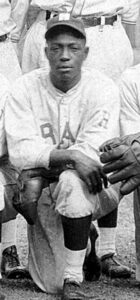
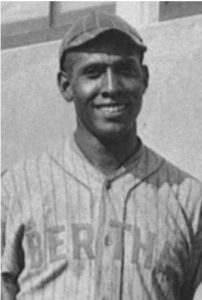
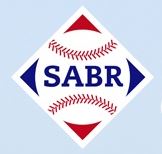
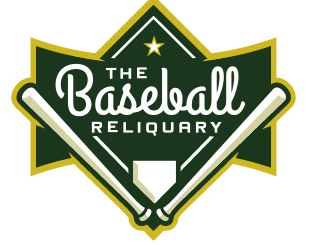
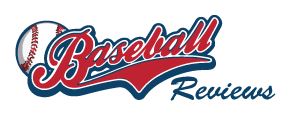



Thanks for writing your thoughts on the ballot.
What is your source for O’Neil winning a batting title? It seems your stats do not jibe with MLB’s official record. Do you have an independent source?
Thanks